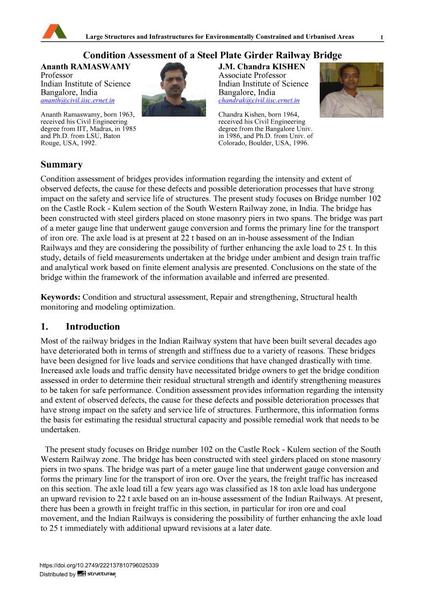Condition Assessment of a Steel Plate Girder Railway Bridge

|
|
|||||||||||
Détails bibliographiques
| Auteur(s): |
Ananth Ramaswamy
J. M. Chandra Kishen |
||||
|---|---|---|---|---|---|
| Médium: | papier de conférence | ||||
| Langue(s): | anglais | ||||
| Conférence: | IABSE Symposium: Large Structures and Infrastructures for Environmentally Constrained and Urbanised Areas, Venice, Italy, 22-24 September 2010 | ||||
| Publié dans: | IABSE Symposium Venice 2010 | ||||
|
|||||
| Page(s): | 446-447 | ||||
| Nombre total de pages (du PDF): | 8 | ||||
| Année: | 2010 | ||||
| DOI: | 10.2749/222137810796025339 | ||||
| Abstrait: |
Condition assessment of bridges provides information regarding the intensity and extent of observed defects, the cause for these defects and possible deterioration processes that have strong impact on the safety and service life of structures. The present study focuses on Bridge number 102 on the Castle Rock - Kulem section of the South Western Railway zone, in India. The bridge has been constructed with steel girders placed on stone masonry piers in two spans. The bridge was part of a meter gauge line that underwent gauge conversion and forms the primary line for the transport of iron ore. The axle load is at present at 22 t based on an in-house assessment of the Indian Railways and they are considering the possibility of further enhancing the axle load to 25 t. In this study, details of field measurements undertaken at the bridge under ambient and design train traffic and analytical work based on finite element analysis are presented. Conclusions on the state of the bridge within the framework of the information available and inferred are presented. |
||||

